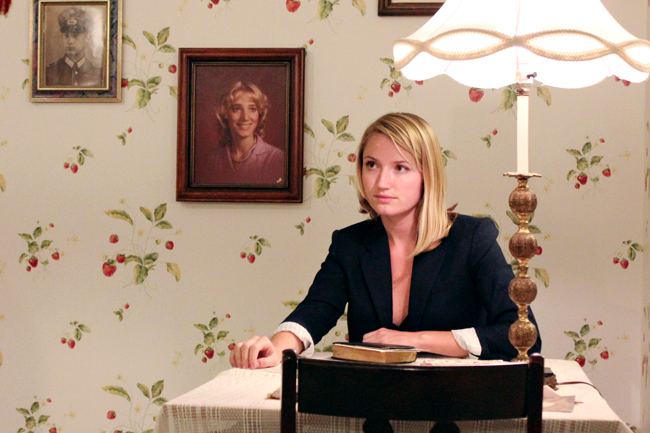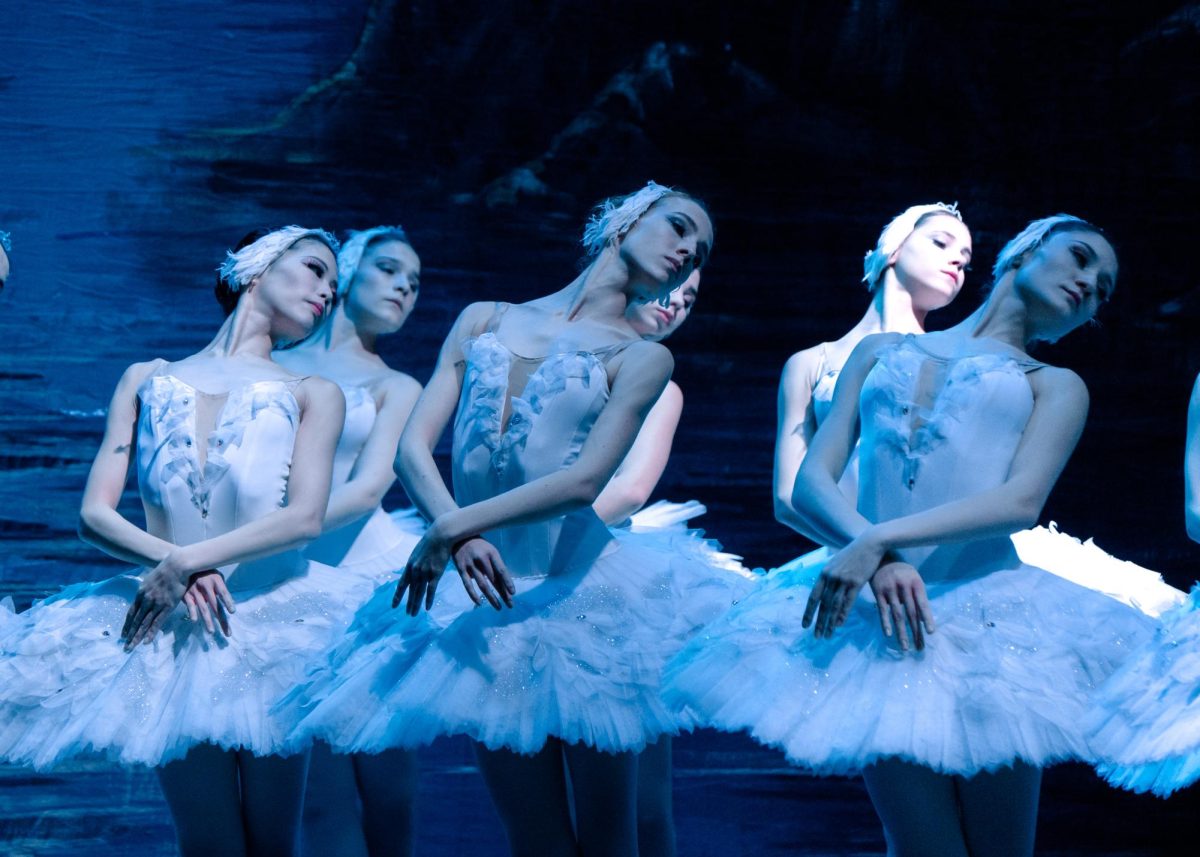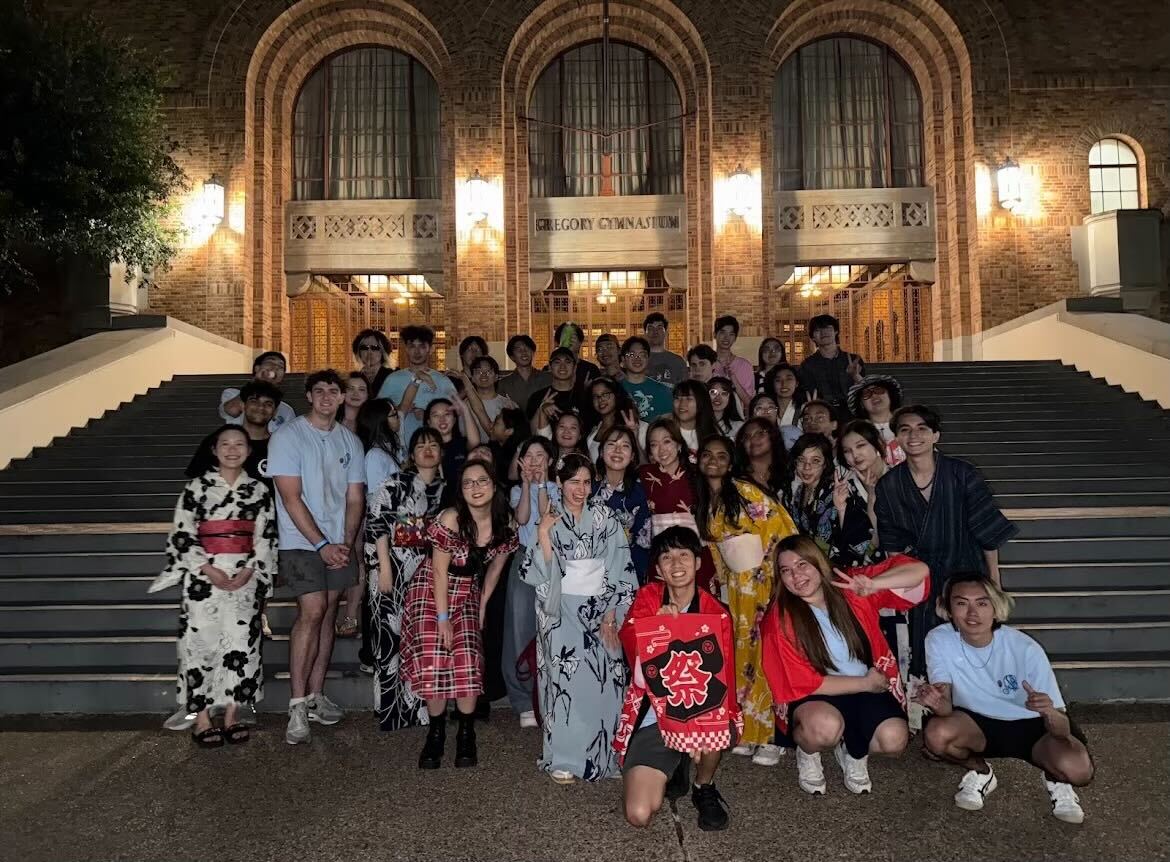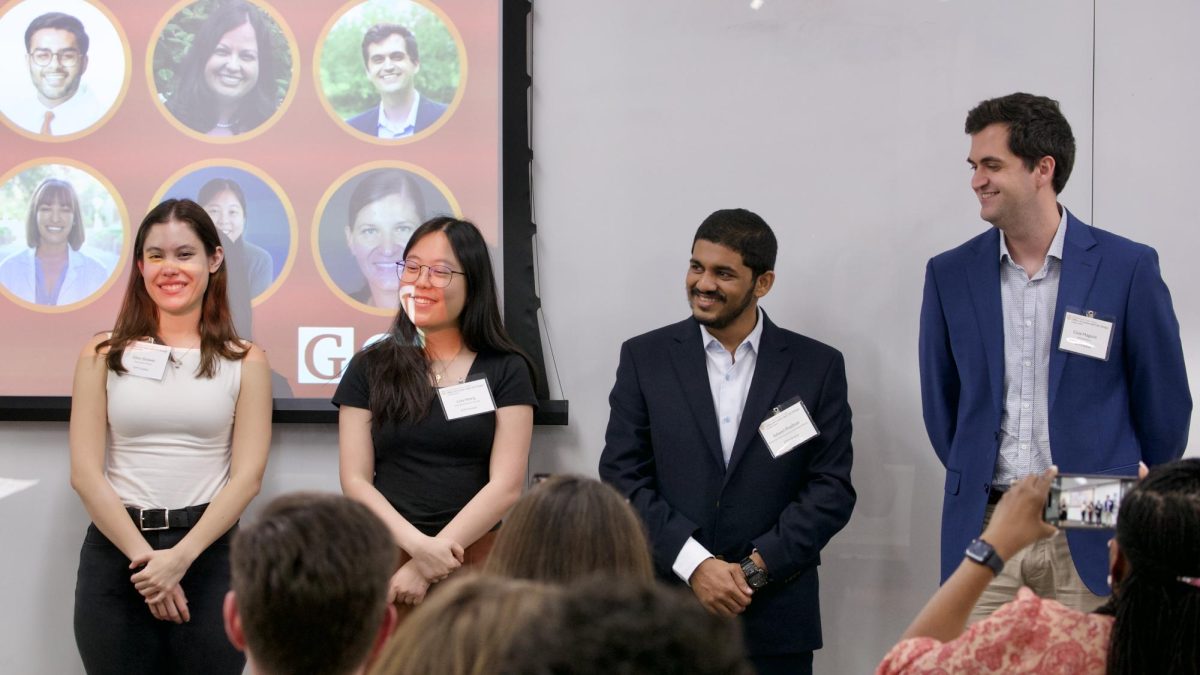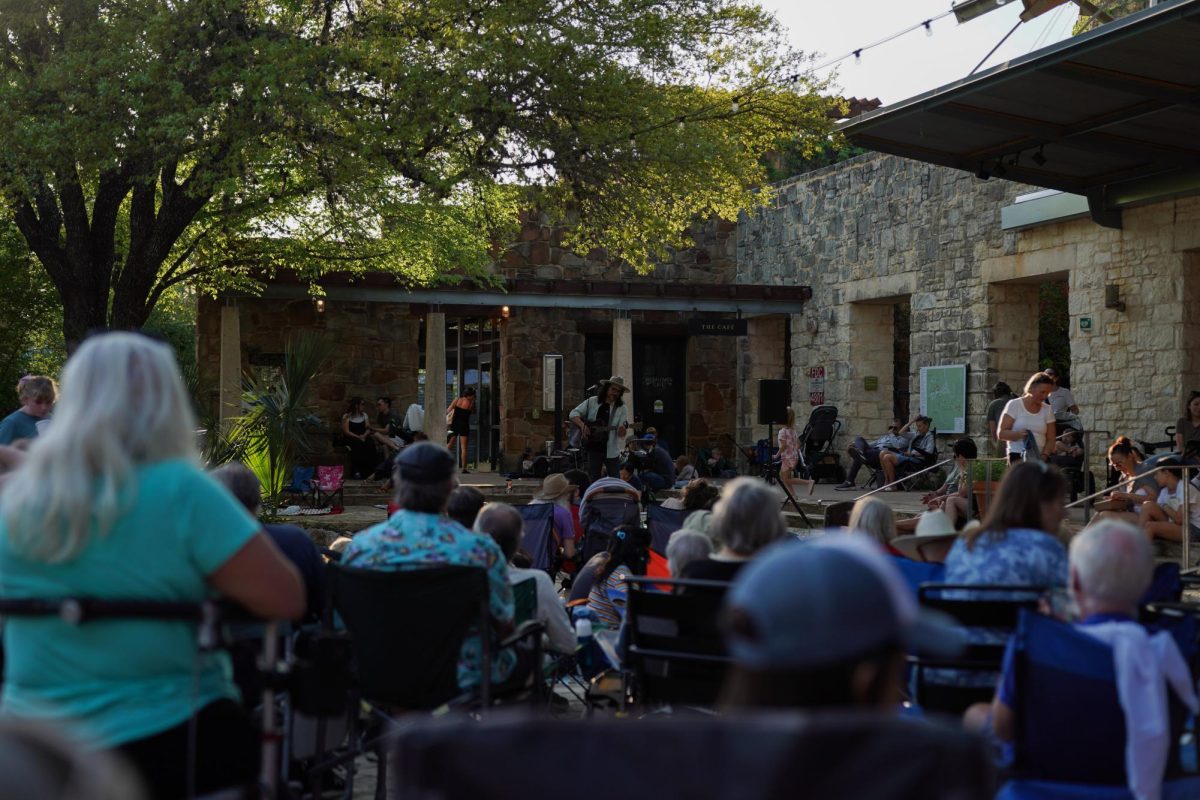Faded family portraits hang off of white wallpaper covered in pictures of strawberry plants. Letters from a father at war are strung across half-built walls on the other side of the room. A soft voice speaks in German, and a wooden cuckoo clock chimes in the background. The poorly lit kitchen is the architecture of philosophy and studio art senior Randi Mabry’s childhood memory.
It is also her latest art piece and installation.
At the age of 18, Mabry’s mother received a letter that her grandfather wrote in 1941 that revealed that he was a German sergeant in World War II. The letter intimately details his time spent in Normandy, where he was shot and cared for at a French sickbay. Roughly a year ago, Mabry’s mother gave her the letter, which Mabry had someone translate into English. To cope with the weight of the knowledge of her heritage, Mabry turned to her favorite medium of expression — installation art — to create a full-scale model of her grandmother’s kitchen. The exhibition, titled “meine karten sind durchlochert: my maps are full of holes,” is currently on display at Pump Project’s Flex Space. The exhibition’s closing reception with traditional German food and discussion will be held on March 29.
“It just seemed natural to create a space and tell a narrative, a narrative that was beyond writing another letter or story in words,” Mabry said. “I wanted to create a space and invite people back into my memory of my grandmother, who is really my strongest connection to that lineage. It’s intimate and slightly uncanny.”
Mabry began conceptualizing the installation about eight months ago when she proposed her idea to Pump Project’s gallery director Rebecca Marino. Marino explained that she accepted Mabry’s proposal because of the complexity and ambition of the idea.
“I really liked the idea of her fitting her family context into the historical context,” Marino said. “I thought conceptually it was very strong and the idea was very strong. When she said she wanted to recreate her family’s kitchen, I just loved it. There’s a real, genuine interest, and I was personally intrigued by the idea as a whole.”
Mabry’s installation only shows the pieces of the kitchen that she remembers and contains some of her family’s heirlooms such as an old rocking chair, a drawing of their town in Germany and a refrigerator filled with German sugar cubes that her grandmother used to buy.
“There’s this terrifying problem of this family lineage of fighting for Nazi Germany that’s in her letter and this image of Nazi war craft,” said Jeff Williams, an assistant art history professor. “So, it blends this thing that’s comforting and homely, that you identify with, your most secret and warm feelings, and that’s kind of flipped on its head with this horrifying realization of this hidden past.”
According to Mabry, the installation allowed her to present the complex layering of her family in a humanistic and comprehensive way.
“I love doing installation sculptures — this basic phenomenal form of experience,” Mabry said. “If you move through it physically and spatially, it’s this all-encompassing experience. It’s a different relationship than you would have to a painting. This couldn’t be as simple as a painting or a book.”
The exhibition allows visitors to physically experience part of Mabry’s family history, and it provides people the opportunity to reflect on their own heritages, Williams said.
“I think one of things that someone walking to the space should take away is that hopefully it gets them to, at the very least, question their own construction of their memories and biography,” Williams said. “That it’s very much Randi, but you think about your own personal history and the various stories within the family and complex relationships with how your ancestors ended up in America and their hardships and the insecurities of going through that endeavor.”

